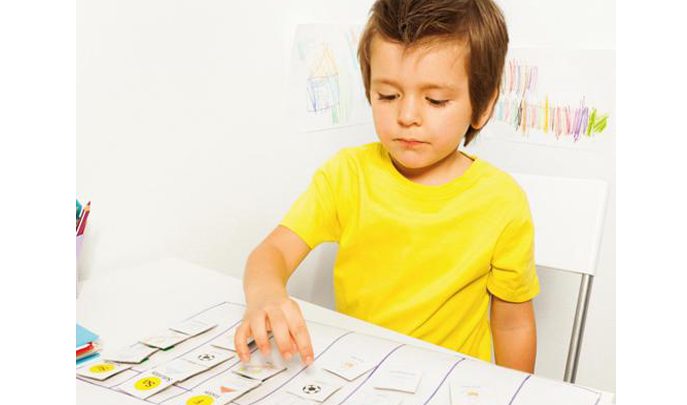Get Your Visual Timetables Right

Visual timetables are a helpful tool, but only if they’re used properly, advises Lynn McCann…

- by Lynn McCann

A visual timetable will often be one of the first strategies suggested to support a child with an autism spectrum condition (ASC). It may be written in a child’s Education Health and Care Plan (EHCP), though many teachers will already have some form of visual timetable displayed in their classroom for the whole class or individual children.
Not all teachers understand the true purpose of a visual timetable – they let the child know what’s going on and in what order, but are also an important teaching tool. The main teaching opportunities include:
Memory and recall skills
Seeing the structure of the day can improve memory skills for children who think better in pictures than verbal language. Instead of absorbing a list of verbal words, they can utilise their visual memory to remember what will be happening and in what order.
Organisational skills and independence
The child should be managing their own timetable. That means self-checking what they should be doing and where they should be, and taking off symbols and putting them in the ‘finished’ pocket themselves.
Executive function skills
These are the skills the brain uses to start, work through and manage tasks, routines and events, including our own reactions and behaviours. I see far too many visual timetables serving as pretty pictures for a classroom wall – and even then, the pictures won’t be relevant to that day’s schedule, and the children won’t have been taught to manage the timetable themselves.
I’ll then often hear, “Oh, we tried a visual timetable but it didn’t work,” or “They don’t need a visual timetable, they’ve grown out of it.”
Visual timetables should grow with the child. As adults, we use calendars, lists and memos to help keep ourselves organised. If we want our pupils with ASC to develop good organisational skills, then a visual timetable can be a great start. Whether you use photos, symbols or written lists for older children, the format can develop as the child does.
Orientation obsession
Let’s dispel one myth, once and for all – IT DOES NOT MATTER WHETHER IT IS HORIZONTAL OR VERTICAL. Go with whichever orientation fits into your space and the pupil can easily use. I have known staff who worried about this endlessly, simply because one professional said to do it one way and another said do it the other way. Some didn’t start using their visual timetable for weeks, because they were so concerned about getting it wrong.
Start by ensuring that the visual timetable is pitched at the right level for the child by using objects of reference, photos, symbols and words that will make sense to them. Print them out on cards and laminate them, so that they can be reused each day. Remember to include timetable cards that represent sensory breaks and reward activities, so the child isn’t anxious about when these will take place.
Once the cards are finished, make sure that the timetable is accurately set up with part or all of the day’s activities every day. This presents an ideal opportunity to teach the child(ren) how to manage removing the symbols after each activity is completed. The finished activity symbol should then be posted in a box or envelope to indicate the ending of that activity and commencement of the next.
Year 6 children could benefit from using a visual timetable that spans an entire week to help prepare for their transition to secondary, if they can cope with the higher volume of information.
A pivotal strategy
Over the years I’ve worked with some pupils who were at risk of being excluded for their behaviour. When a visual timetable was used to show them their lessons, ‘calm or choice times’, sensory breaks – and most importantly, when home time was due – alongside other strategies, it had a huge impact in helping the child to navigate the day, reducing their stress and anxiety levels and thus reducing their challenging behaviours.
Honestly – visual timetables can sometimes be a pivotal strategy that makes all the difference for a child.
About the author
Lynn McCann is an ASC specialist teacher and author; for more information, visit reachoutasc.com or follow @reachoutASC










